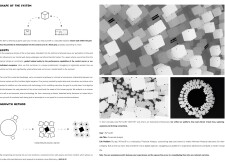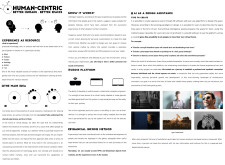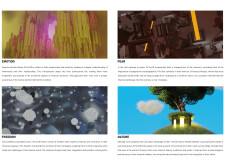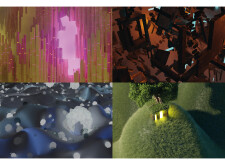5 key facts about this project
The design emphasizes the relationship between virtual experiences and physical spaces, creating an environment that encourages exploration and connection. Users find themselves in a large, open area where a single node acts as the center point, from which a larger grid can grow. This framework is flexible, allowing it to adapt and evolve based on how individuals interact with it.
Conceptual Framework
The project removes traditional barriers in design, allowing users to engage with their surroundings in new ways. It invites exploration and encourages introspection. Through thoughtful design, individuals can examine their emotions and experiences, while intelligent systems offer suggestions for spaces that respond to those feelings. This approach integrates emotional health into the user experience.
User Interactivity
A significant aspect is the focus on personal growth and human connections. The environment promotes self-awareness and mindfulness, supporting users as they navigate their emotional journeys. In today's digital landscape, where mental health can often be neglected, the project brings human needs and emotional well-being to the forefront.
Adaptability and Inclusivity
Another key feature is the adaptability of the design. Users can shape their spaces through both 3D modeling software and simple text commands. This accessibility allows people with varying skill levels to engage with the environment. It fosters a sense of ownership and encourages a deeper relationship with the space.
The design favors the flow of light, the arrangement of space, and the dynamics of user interaction over traditional materials. By creating an environment that resonates with human emotions rather than just focusing on physical aspects, it opens pathways toward a more interactive future. The careful arrangement of spatial elements highlights the potential for architecture to influence how people connect with both themselves and each other within the digital realm.






















































